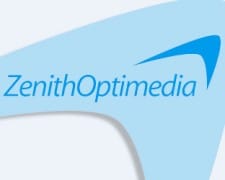 Given the current economic conditions and expected ad market, ZO is projecting a 4.3% increase in ad spending for 2012, consistent with their October forecast. They expect further increases of 3.5% in 2013 and 4.4% in 2014. ZO is also projecting 2015 ad spending growth for the first time, increasing 4.7%.
Given the current economic conditions and expected ad market, ZO is projecting a 4.3% increase in ad spending for 2012, consistent with their October forecast. They expect further increases of 3.5% in 2013 and 4.4% in 2014. ZO is also projecting 2015 ad spending growth for the first time, increasing 4.7%.
Zenith continues to see TV dollars moving from network to cable. Print will suffer on account of digital media, but mobile devices have given new life to magazines. As smartphones, tablets and e-readers gain traction, ZO expects accelerated adoption of these devices.
The largest increases in US spend for 2012 are all under the internet category. They expect increases of 58.0% for mobile, revised from 49% growth, 37.0% for social media, 29.0% for online video and 15.0% for paid search. Print will
continue to suffer as technology replaces paper with touchscreens and digital ink. The largest decreases for 2012 are for newspapers (-8.0%) and magazines (3.4%).
Radio
ZO expects to see slight increases of 2.9%, 1.9%, and 1.0% in 2013, 2014 and 2015 respectively. Currently they expect 2012 to increase by 2.1%.
ZO says radio continues to be the choice medium of retailers, seasonal product producers and automotive, providing heavy frequency and drive to retail messages. Fall and winter bring key sporting events that generate strong
listener interest in basketball, college football and NFL.
Radio is still continuing to see a steady increase in listeners. A contributing factor to this growth is the industry’s experimentation with new formats to help drive audiences. Such formats include the 24/7 comedy. Stations are also introducing fresh programming ideas for existing formats.
Clear Channel has made a deal with the record label Big Machine, which has acts like Taylor Swift and other country artists on its roster. The deal was made to pay royalties to performers each time their songs are played on its stations. This comes as a big change because traditionally, radio stations in America paid royalties only to songwriters and music publishers, not to performers.
Network TV
Given the strength of the Summer Olympics, Network TV spend is expected to be up 1.0% in 2012. ZO’s 2013 estimate has been downgraded slightly to a -2.0%. As dollars move into cable, they see increased small decreases
of -1.0% in 2014 and -1.0% in 2015. Network TV continues to be dominated by a few key categories, which make up about 25.0% of all network TV spending. These include (in descending order of spending volume) wireless telecom providers, motion pictures, quick service restaurants, Asian car factories
(sales and leasing) and domestic car factories (sales and leasing). Wireless telecom companies alone account for 7.4% of all network ad spending.
Substantial price increases, a shaky stock market and high unemployment contributed to a fairly flat network upfront. The big four networks (ABC, Fox, NBC, CBS) drew in an estimated $9 billion, roughly the same as last year’s
upfront, once again falling far behind the high of 2004, which was estimated to be around $9.6 billion. NBC was the only network to score gains over last year.
The Summer Olympics in London defied most expectations that NBCUniversal would lose money, considering the enormous $1.18 billion the network
spent in acquisition rights. According to Kantar, the Olympics brought in $1.23 billion in advertising revenue for the NBC’s broadcast network alone. Taking digital and cable revenues into consideration, NBC made substantially more money from the Olympics than the Games cost to acquire, which has not been the case in previous years. Network revenues for the 2012 Olympic Summer Games were 62.0% higher than revenues for the 2010 Vancouver Winter Games and were 31.5% above those of the 2008 Beijing Summer Games.
Cable TV
Zenith still anticipates strong cable spending going forward, with increases of 8.0% in 2012 and 7.0% in each year to 2015. Cable now draws a larger percentage of ad dollars than network TV, accounting for 12.3% of total advertising spend and 31.8% of total TV spend. They forecast that cable will account for 13.3% of total ad spend and 35.4% of TV spend by 2015.
Spot TV
Spurred by the political advertising storm, spot advertising expenditures are expected to be 12.0% higher in 2012 than 2011. The Obama and Romney campaigns, along with their allies, spent a record-breaking $710 million on general election ads in a mere twelve battleground states. Of the top ten stations airing political ads, six were in the heavily-contested state of Ohio, with four in Cleveland and two in Columbus. The introduction of the super Pac has brought political spending to new heights. This category is not classified as ‘political’ on a
station’s rate card and pays top dollar to be on air. While numerous concerns were raised about super Pacs, and in spite of these types of independent groups spending $1 billion in the 2012 election, the impact was far less than was expected.
The automotive category is coming back very strongly on both the foreign and domestic front, with tier I, tier II and now tier III local dealer advertisers spending heavily.
There is a strong appetite among consumers for new vehicles. According to Kantar, for the 2012 year through August, Asian dealers are the category with the second highest spot spending (behind quick service restaurants) and domestic dealers are fourth (after furniture stores).
Political spending for the year through August was ranked 17th, but this will show a greater increase when September and October data becomes available. Looking into the future, they expect annual increases in spot ad spending of 3.0% in 2013, 4.0% in 2014 and 3.0% in 2015.
Syndicated TV
Given three key market drivers, ZO has adjusted forecasts to positive/flat growth for 2012 (+2.0%), 2013 (+2.0%), 2014 (+1.0%) and 2015 (+1.0%). The strength of the comedy and talk genres, an increase in inventory and strong potential for fall newcomers, all contributed to revised projections.
Internet
Digital ad spend continues to be strong as consumers spend more time with digital media and advertisers look for new ways to reach them. The internet will continue to drive total ad growth in the U.S. Zenith predicts total internet ad spending to grow at a rate of 18.2% in 2012, 18.1% in 2013 and 18.3% in 2014. They are now also forecasting a 17.6% increase in internet ad spending in
2015.
Highlights from ZO’s global report:
• Global ad expenditure growth forecast to strengthen over the next three years, rising from 3.3% in 2012 to 4.1% in 2013 and 5.6% in 2015
• Developing markets to contribute 61% of adspend growth between 2012 and 2015, and increase their share of global adspend from 34% to 37%
• Continued strong growth expected from Eastern Europe & Central Asia, ‘Catch-up Asia’, and Latin America, growing at 9%+ a year
• North America and ‘Advanced Asia’ to deliver solid 4%-5% annual growth
• Peripheral Eurozone to shrink 4% in 2013, stabilize in 2014 and grow 2% in 2015
• Northern & Central Europe static in 2013, then to grow 2% a year in 2014 and 2015
• Online video and social media to help drive 20% annual growth in internet display over the next three years
• Internet advertising to exceed combined newspaper and magazine total in 2015





